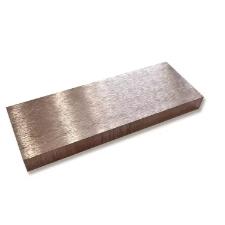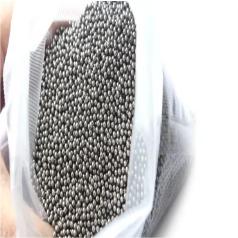Metal Plate Inside Your Phone: What’s the Deal?
(Can You Put The Metal Plate Inside Your Phone)
Ever wonder about that thin piece of metal you might have seen inside your phone? Maybe you noticed it while watching a repair video. It’s not just for show. That little metal plate plays a surprisingly big role. Let’s dive into what it is, why it matters, and how it works.
1. What Exactly is This Metal Plate Inside Your Phone?
Look inside your phone. Near the battery or the circuit board, you might spot a small, flat piece of metal. It’s usually made of copper or another good conductor. This isn’t a random part. This metal plate is called a shield. Its main job is blocking electromagnetic interference, or EMI. Think of EMI as electronic noise. It comes from all the signals buzzing around inside your phone. This noise can mess with the phone’s sensitive parts. The shield acts like a barrier. It traps this noise inside certain areas. It also keeps outside noise from getting in. This helps your phone’s parts talk to each other clearly. Without it, your Wi-Fi, Bluetooth, and cellular signals could get fuzzy. Your phone might drop calls or have slow internet. So, this plate is crucial for keeping everything running smoothly.
2. Why Do Phones Need a Metal Plate Inside Them?
Phones are packed with tiny, powerful parts. These parts work hard. They generate heat and electronic signals. These signals can interfere with each other. This interference causes problems. Your GPS might lose its location. Your calls could cut out. Music might skip. The metal shield fixes this. It creates a quiet zone for important parts. The radio frequency (RF) chips need this quiet space. These chips handle your phone’s connection to the world. They manage calls, texts, and internet. The shield protects them. It stops interference from the phone’s processor and other chips. It also protects those chips from outside interference. This ensures strong, clear signals. Your phone works reliably because of this simple plate. It’s a small part doing a big job.
3. How Does This Metal Plate Actually Work?
The metal plate works like a cage. It’s often soldered directly onto the phone’s circuit board. It forms a box around the sensitive chips. This box is called a Faraday cage. A Faraday cage blocks electromagnetic fields. It works because metal conducts electricity well. When electromagnetic waves hit the metal, the metal absorbs or reflects them. This traps the waves inside the cage or keeps them out. Inside the phone, the shield cages the noisy parts. It stops their electronic noise from escaping and bothering other parts. It also cages the sensitive parts. This protects them from noise made elsewhere in the phone. The plate is grounded. This means it’s connected to the phone’s electrical ground. Grounding helps the shield work better. It safely channels away the unwanted electrical energy. So, it’s a simple but smart design.
4. Where Else Do We See This Metal Plate Technology?
This metal shielding isn’t just for phones. You find it in almost all modern electronics. Look inside your laptop. You’ll see metal plates or foil covering parts of the motherboard. These shield the processor and memory chips. Radios and televisions use shielding too. It keeps the signals clean. Even your car has it. Modern cars have lots of computers. Shielding protects these computers from interference. This interference could come from the engine or other electronics. Medical devices rely heavily on shielding. Think about pacemakers or hospital equipment. They must work perfectly. Shielding protects them from stray signals. It prevents malfunctions. In factories, machinery often has shields. This prevents electrical noise from causing errors. So, this technology is everywhere. It’s essential for reliable electronics.
5. Metal Plate FAQs: Answering Your Burning Questions
People often have questions about this metal plate. Let’s tackle some common ones.
Can I remove the metal plate? No, you shouldn’t remove it. It’s there for a reason. Taking it out can cause interference. Your phone might have signal problems. It could even damage other parts over time. Leave it in place.
Does it get hot? The metal plate can get warm. It absorbs some heat from the chips it shields. This heat is usually normal. The phone’s overall cooling system handles it. It shouldn’t get dangerously hot. If your phone feels very hot, it’s likely another issue.
Will it interfere with magnets? Small magnets probably won’t affect it. The plate isn’t usually strongly magnetic itself. Strong magnets might cause minor issues. But normal fridge magnets are fine. Phone cases with magnets usually don’t cause problems either.
Is it safe? Yes, it’s perfectly safe. The plate is completely enclosed inside the phone. It doesn’t emit anything harmful. Its job is actually to contain interference. It helps the phone meet safety standards.
What about phone repairs? Repair technicians see these plates often. They are careful when removing them. They need access to the parts underneath. After fixing the phone, they put the shield back. This ensures the phone keeps working right. If the shield is damaged, they might replace it. Proper shielding is important.
Can it affect wireless charging? No, the metal plate doesn’t block wireless charging. Wireless charging uses magnetic fields. The plate is designed not to interfere with this specific function. Phones are built so that shielding doesn’t stop charging.
Does it help with water resistance? Not directly. The shield itself isn’t a seal against water. Water resistance comes from gaskets and seals around the phone’s case. The shield is inside, protected by these seals. Its job is signal integrity, not waterproofing.
Why do some phones seem to have more metal inside? Higher-end phones might have more complex shielding. They pack in more powerful components. These components might generate more noise. So, they need better shielding. Simpler phones might use less shielding or different materials. But the basic idea is the same.
What if my phone gets bent? A bent phone could damage the shield. If the shield cracks or breaks, it might not work well. This could lead to signal problems. If your phone is badly bent, get it checked.
(Can You Put The Metal Plate Inside Your Phone)
Do older phones have them? Yes, even older phones used metal shields. As phones got more complex, the shielding became more important. Early cell phones needed protection from interference too. The technology has been around for decades.
Inquiry us
if you want to want to know more, please feel free to contact us.


